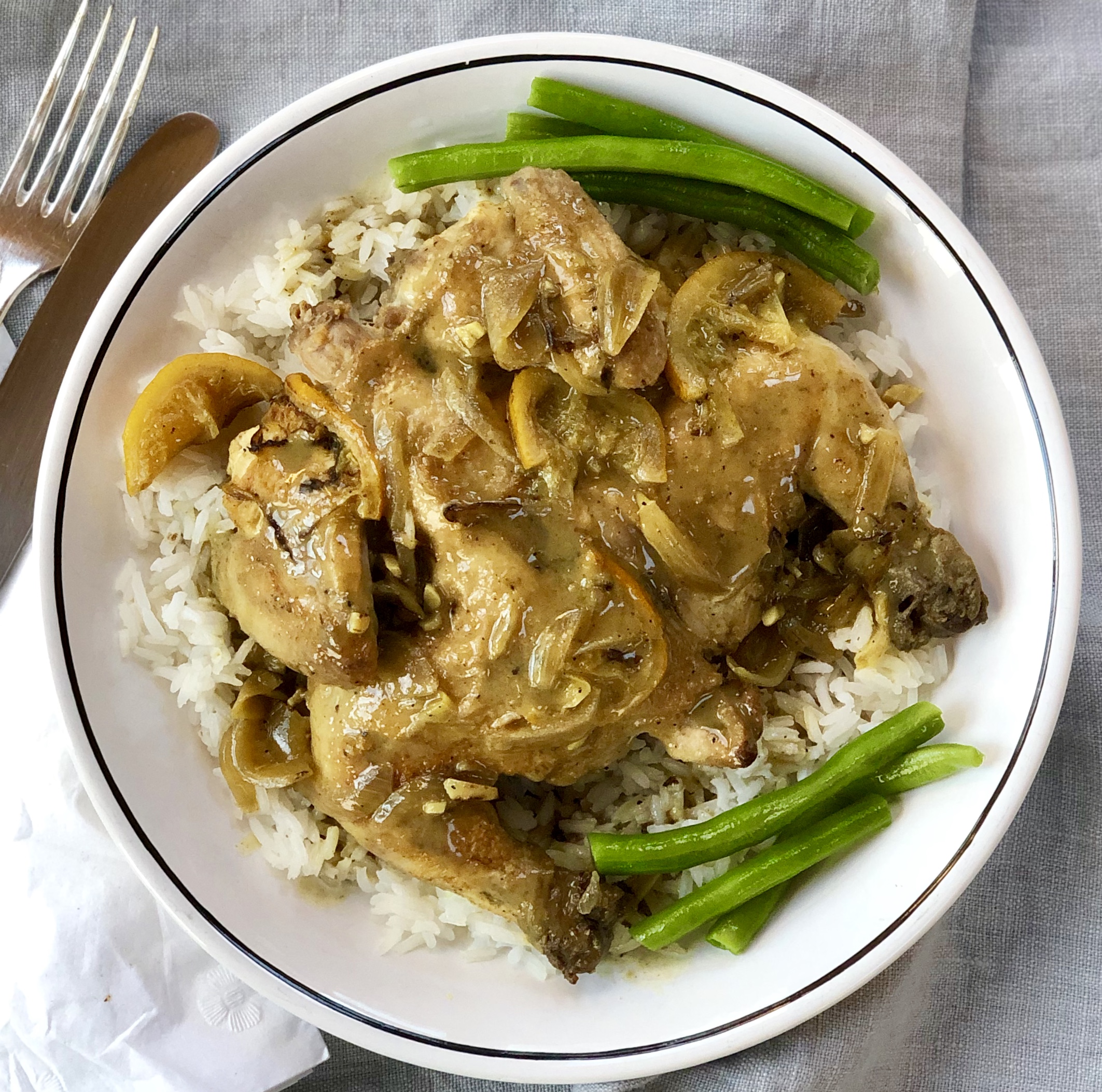People send me all sorts of press releases about different foods and ingredients. But one that recently caught my attention was about Pereg’s new Hawaij spice combos. I was intrigued enough to say “yes” when samples were offered. I love trying out new spice blends and experimenting with them in recipes.
Of course Hawaij is not new — just new to me. It is a traditional Yemenite seasoning, the word in Arabic translates as “mixture.”
In fact there are two such mixtures: savory Hawaij for soups, meats, vegetables and so on, and sweet Hawaij for coffee. The Pereg savory blend includes ground cumin, turmeric, coriander, black pepper, cardamom and cloves, a flavorful combination of warmth and spice, an aroma that’s magical. The coffee-blend contains ginger, cinnamon, cloves and cardamom.
The company sent me both, so — I got cooking.
The first recipe was so good I have made it several times already: braised Cornish hens in a coconut milk based curry-type sauce, served with cooked rice and a green vegetable. I have since made this recipe a few more times using chicken wings and bone-in chicken breasts.
The coffee spice? I used it to season homemade honey muffins. I added some to my afternoon coffee (a middle-eastern counterpart to American pumpkin-spice latte). And I couldn’t leave it at that so I made some Hawaij-coffee-spice ice cream.
I see more to come in the future of this fabulous spice blend.
Chicken or Cornish Hen with Hawaij Spice
2 tablespoons olive oil
2 cornish hens, split down the back or 4 large pieces of chicken
1 large onion, chopped
1/2 lemon, sliced
3 cloves garlic, chopped
1-1/2 teaspoons hawaij
salt and freshly ground black pepper to taste
1-1/2 cups coconut milk
3 cups cooked rice
Preheat the oven to 375 degrees. Heat the olive oil in a saute pan over medium heat. Dry the surface of the hens or chicken, place them in the pan and cook them for 4-5 minutes, turning once or twice, to brown the surface. Remove the pieces to a dish and set aside. Add the onion, lemon slices and garlic to the pan. Sprinkle with hawaij and salt and pepper to taste. Stir to coat the ingredients evenly. Return the hens/chicken to the pan, spoon some of the onion mixture on top. Pour in the coconut milk and stir to blend it in. Cover the pan. Place the pan in the oven and cook for 30-35 minutes or until the meat is tender and cooked through. Place the rice on a serving platter. Remove the hen/chicken pieces from the oven and place them on top of the rice. Keep the platter warm in the oven. Place the saute pan over high heat on the cooktop. Bring to a boil, then simmer the pan juices for about 4 minutes or until slightly thickened. Pour over the hen/chicken and serve.
Makes 4 servings


